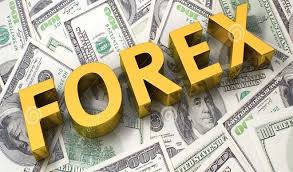The International Monetary Fund (IMF) recently released a report titled “Nigeria’s eNaira, One Year After,” revealing that 98.5% of eNaira wallets remained unused one year after the launch of the central bank digital currency (CBDC). This revelation has sparked discussions regarding whether the eNaira project has been a waste of government resources.
According to the IMF report, the adoption of eNaira by households and merchants has been sluggish and limited. The total number of retail eNaira wallets downloaded amounted to only about 0.8% of Nigeria’s active bank accounts. The report also highlighted that transactions were carried out by only 1.5% of the downloaded wallets, indicating a lack of consistent usage.
The IMF noted that most eNaira wallets appear to remain inactive, with a surge of activity limited to a few weeks after their creation. On average, there have been approximately 14,000 eNaira transactions per week, which is only 1.5% of the total number of wallets. This means that 98.5% of wallets have not been used even once in a given week. The average transaction value has been around 923 million naira per week, amounting to 0.0018% of the average amount of M3 during the same period.
The disappointing levels of adoption and usage of the eNaira have fallen well below expectations, as stated in the IMF report. It is evident that the public has not embraced the digital currency as initially anticipated. These findings raise concerns about the efficiency and effectiveness of the resources allocated to the eNaira project.
However, the IMF report also emphasizes that it is still premature to draw definitive conclusions about the fate of the eNaira. The project is relatively new, and more time is needed to assess its long-term viability and impact on the Nigerian economy.
It is worth noting that the IMF had previously highlighted the sluggish usage of the eNaira since its launch in 2021. With only about eight percent of eNaira wallets in active use and an average transaction value of N53,000, the digital currency’s uptake has been limited.
The Managing Director of the IMF, Kristalina Georgieva, has also cautioned about the potential unforeseeable consequences that could arise from the retail central bank digital currencies.
while the current utilization of eNaira has been below expectations, it is essential to consider that the project is still in its early stages. The government and regulatory authorities should closely evaluate the factors influencing its adoption and take necessary steps to promote awareness, trust, and usage of the digital currency. Continued monitoring and adjustment of strategies will be crucial in determining the future success of the eNaira project.
Assessing the Costs and Benefits of Nigeria’s Digital Currency
Since its launch, the eNaira, Nigeria’s central bank digital currency (CBDC), has been a topic of intense discussion and scrutiny. While there are expectations that such a digital currency could revolutionize the country’s financial landscape, concerns have been raised about the cost implications and overall value of the eNaira project.
The implementation of a digital currency involves significant investments in infrastructure, technology, and security measures. The Nigerian government has undoubtedly allocated substantial resources to develop and launch the eNaira. However, the exact cost breakdown of the project remains largely undisclosed, making it challenging to assess the efficiency and cost-effectiveness of this venture.
One aspect that requires careful consideration is the cost of developing and maintaining the necessary technological infrastructure to support the eNaira. Building a secure and reliable digital currency platform entails substantial financial commitments. Additionally, ongoing expenses related to system updates, cybersecurity measures, and customer support services must be factored into the overall cost equation.
Another key consideration is the cost of public education and awareness campaigns aimed at promoting the adoption and usage of the eNaira. The success of any digital currency hinges on its acceptance and utilization by the public. As seen in the IMF report, the adoption of eNaira has been disappointingly low, necessitating additional efforts to educate and incentivize Nigerians to embrace the digital currency.
Furthermore, regulatory oversight and compliance measures add to the cost of implementing and maintaining a digital currency. Establishing frameworks to ensure anti-money laundering (AML) and know-your-customer (KYC) protocols are followed requires significant investment in personnel, training, and monitoring systems. These costs contribute to the overall expense of the eNaira project.
While the precise cost figures associated with the eNaira project are not publicly available, it is crucial for the Nigerian government to conduct a comprehensive cost-benefit analysis. This assessment should weigh the expenses incurred against the potential economic and financial benefits the eNaira could bring.
Advocates of the eNaira argue that a well-implemented digital currency could enhance financial inclusion, streamline transactions, and reduce costs associated with traditional banking services. However, critics contend that if the costs outweigh the benefits or if the adoption and usage remain low, the project may not yield the desired returns on investment.
To ensure transparency and accountability, it is imperative for the government to provide stakeholders and the public with detailed information regarding the costs incurred in developing and maintaining the eNaira ecosystem. This transparency would enable a thorough evaluation of whether the resources allocated to the project have been effectively utilized and whether the benefits justify the expenditures.
While the cost of the eNaira project remains undisclosed, it is crucial to assess its expenses in relation to the potential benefits and economic impact. The government should prioritize transparency and accountability in disclosing the cost breakdown and periodically evaluate the project’s efficacy. A well-informed analysis will enable stakeholders to make informed judgments about the eNaira’s value and its role in shaping Nigeria’s digital financial future.











